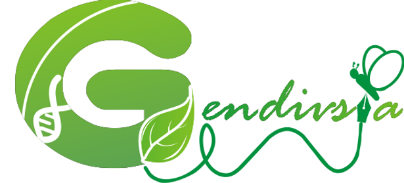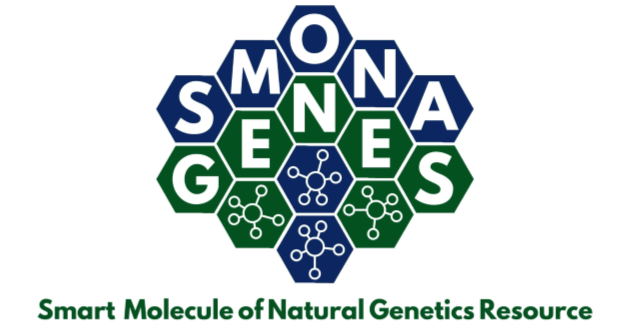The Use of Yellow Kepok Banana Peel Extract (Musa paradisiaca L. Var bluggoe) as an Antibacterial for Chronic Periodontitis Caused by Porphyromonas gingivalis
DOI:
https://doi.org/10.21776/ub.jsmartech.2019.001.01.4Keywords:
MIC, MBC, Yellow kepok banana peel, Porphyromonas gingivalis.Abstract
Chronic periodontitis is the most common periodontal disease, and Porphyromonas gingivalis is its dominant causative microorganism. Yellow kepok banana peel (Musa Paradisiaca L. Var. Bluggoe) contains flavonoids, alkaloids, tannins, saponins and triterpenoids that can inhibit and kill Porphyromonas gingivalis. Purpose:Â To reveal the antibacterial effectiveness of yellow kepok banana peel extract against Porphyromonas gingivalis. Method: This is true experimental research employing the post-test only control group approach. Preliminary research was conducted to determine the concentration of the sample group, 6 treatment groups (5%, 7.5%, 10%, 12.5%, 15%, 17.5%), and 2 control groups were involved. Yellow kepok banana peel extract was obtained through the maceration method using methanol as a solvent. The antibacterial activity was identified using the tube dilution method. Data analysis was conducted through the Kruskal Wallis test, the Mann Whitney test, and the Spearman correlation test. Result: Minimum Inhibitory Concentration (MIC) is obtained at a concentration of 10%, while the Minimum Bactericidal Concentration (MBC) is obtained at a concentration of 17.5%. The test results of tube turbidity statistics indicated that there were significant differences in each extract concentration and there was a relationship between the concentration variables and the turbidity of the tubes. The statistical test results of the colony growth revealed that there were significant differences in each extract concentration and there was a relationship between the concentration variables and the growth of bacterial colonies. Conclusion: Yellow kepok banana peel extract (Musa paradisiaca L. var. Bluggoe) is effective to use as antibacterial for chronic periodontitis caused by Porphyromonas gingivalis.
References
Newman,. M.G., Carranza, F.A., Takey,H.H. 2015. Carranza’s Clinical Periodontology, 12th Ed. California: W.B Saunders Company
Alibsyah,Z.M., Andayani,R., Farhana,A.. 2016 Potensi Antibakteri Ekstrak Jahe (Zingiber Officinale Roscoe) Terhadap Porphyromonas gingivalis secara In Vitro, Journal of Syiah Kuala Dentistry Society, 1(2); 147-52
Prasanna S.G.Vishnu, Lakshmanan Reema. 2016. Characteristics, Uses and Side effects of Chlorhexidine- A Review. IOSR Journal of Dental and Medical Sciences 15 (6) Ver. III .PP 57-59
Ismail. 2015. Faktor Yang mempengaruhi Keputusan Masyarakat Memilih Obat Tradisional Di Gampong Lam Ujong. Idea Nursing Journal. VI(1); 7-14
rajatani.my.id. (2020). rajatani.my.id -. [online] Available at: http://www.rajatani.my.id/ [Accessed 12 Jan. 2020].
Imam Mohammad Zafar, Akter Saleha. 2011. Musa paradisiaca L. and Musa sapientum L. : A Phytochemical and Pharmacological Review. Journal of Applied Pharmaceutical Science 01 (05) p 14-20
Nursanti A, Suparto I H, Kemala T. 2018. Uji Aktivitas Antibakteri Limbah Kulit Pisang Kepok (Musa acuminata x balbisiana), Kulit Pisang Uli (Musa Paradisiaca Sapientum), dan Kulit Pisang Nangka (Musa sp L). Al-Kimia Vol 6(2) 125-130
Lumowa Sonja V.T. , Bardin Syahril. 2018. Uji fitokimia kulit pisang kepok (Musa paradisiaca l.) bahan alam sebagai pestisida nabati berpotensi menekan serangan serangga hama tanaman umur pendek . Jurnal Sains dan Kesehatan. Vol 1 (9) p. 465-69
Saxena M, Saxena J, Nema R, Singh D, Gupta A. 2013. Phytochemistry of Medicinal Plants. Journal of Pharmacognosy and Phytochemistry Vol 1 (6) p. 168-82
Noorhamdani, Sanarto S, Sumarno, Sjoekoer MD, Roekistiningsih, Sri W, Dewi S, Dwi YN, Yuanita M, Dewi E, Siwipeni IR, Bethania SF. 2017. Bakteriologi medik ed. Ketiga. IRDH : Purwokerto, 108-109
Mukhriani. 2014. Ekstraksi, Pemisahan Senyawa, dan Identifikasi Senyawa Aktif, Jurnal Kesehatan, VII (2) p 361-67
Romandanu, Rachmawati,S.H., Lestari,S.D. 2014. Pengujian Aktivitas Antioksidan Ekstrak Bunga Lotus (Nelumbo nucifera). Fishtech,III (01) p.1-5
Pane E.R. 2013. Uji Aktivitas Antioksidan dari Ekstrak Metanol Kulit Pisang Raja (Musa paradisiaca sapientum). Valensi, 3(2) p.76-81
Dhawan D, Gupta J. 2017. Comparison of Different Solvents for Phytochemical Extraction Potential from Datura metel Plant Leaves . Int. J. Biol. Chem., 11 (1) p.17-22
Gunawan,S.G., Setiabudi,R., Nafrialdi, Elizabeth., 2007. Farmakologi dan Terapi. Edisi 5. Balai Penerbit FKUI:Jakarta
Brooks GF, Carol KC, Butel JS, Morse SA, Mietzner TA. 2013. Jawetz, melnick & adelberg Medical Microbiology 26th edition.The Mc Graw-Hill Companies. US p.55,77
Xie Yixi , Yang Weijie , Tang Fen , Chen Xiaoqing , Ren Licheng . 2015. Antibacterial Activities of Flavonoids: Structure-Activity Relationship and Mechanism. Current Medicinal Chemistry Vol 22(1) p. 132-49
He Lu, Wang Hongyuan, Zhang Ru, Li Hong. 2019. The regulation of Porphyromonas gingivalis biofilm formation by ClpP. Biochemical and Biophysical Research Communications Vol 509(2), p. 335-340
Ogawa S, Yazaki Y. 2018. Tannins from Acacia mearnsii De Wild. Bark: Tannin Determination and Biological Activities. Molecules 23;837 p 1-18
Wahyuni NKDMS, Rita WS, Asih IARA. 2019. Aktivitas antibakteri ekstrak kulit pisang kepok kuning (Musa paradisiaca l.) Terhadap bakteri Staphylococcus aureus dan Escherichia coli serta penentuan total flavonoid dan fenol dalam fraksi aktif . Jurnal kimia 13 (1) p. 9 – 15
Downloads
Published
Issue
Section
License
Authors who publish with this journal agree to the following terms:
- Authors retain copyright and grant the journal right of first publication with the work simultaneously licensed under a Creative Commons - Attribution 4.0 International (CC BY 4.0) that allows others to share the work with an acknowledgement of the work's authorship and initial publication in this journal.
- Authors are able to enter into separate permission for non-exclusive distribution of the journal's published version of the work (e.g., post it to an institutional repository or publish it in a book), with an acknowledgement of its initial publication in this journal.
- Authors are permitted and encouraged to post their work online (e.g., in institutional repositories or on their website) prior to and during the submission process, as it can lead to productive exchanges, as well as earlier and greater citation of published work (See The Effect of Open Access).












